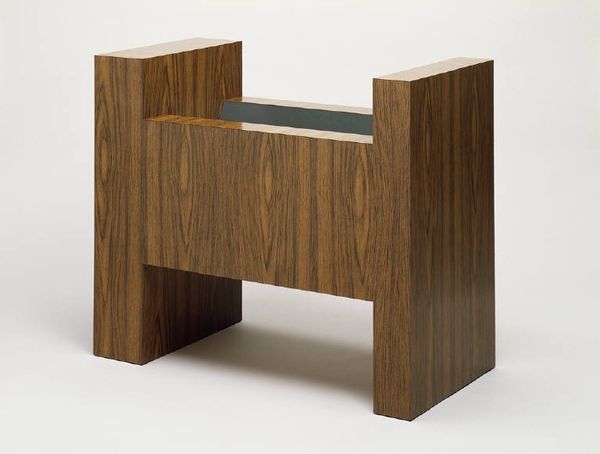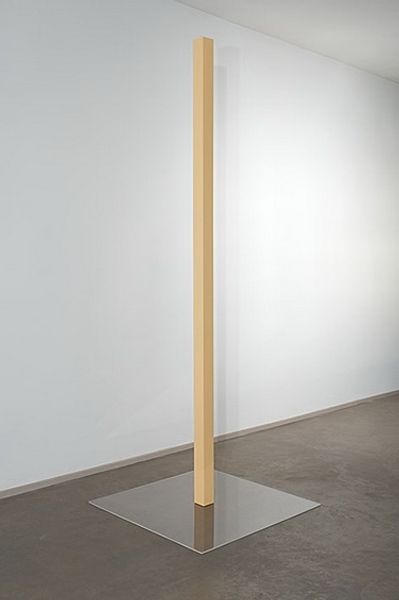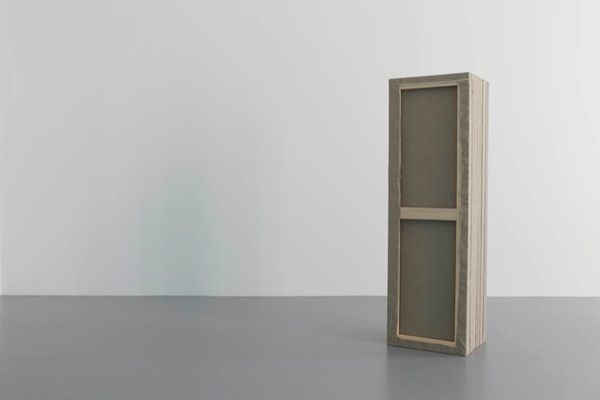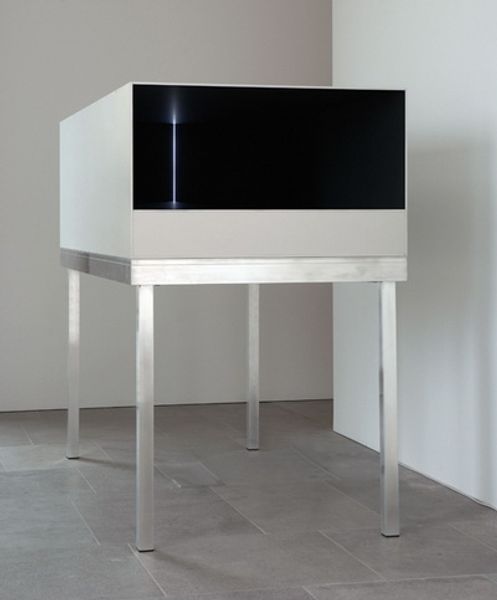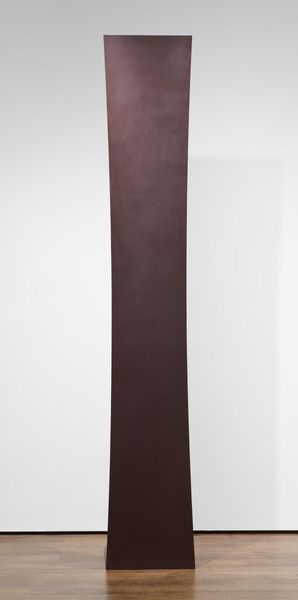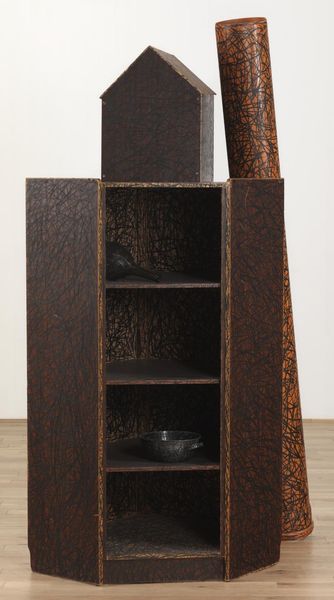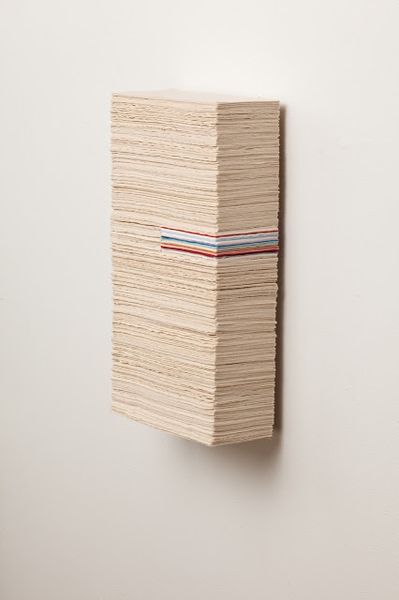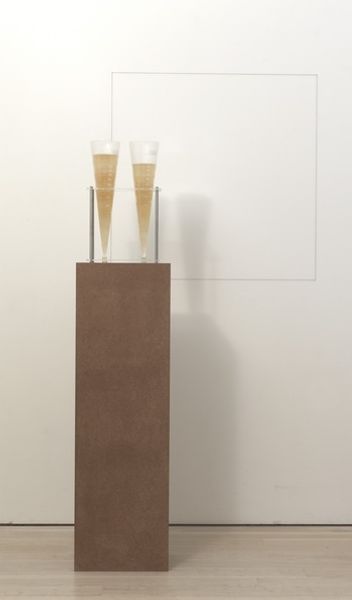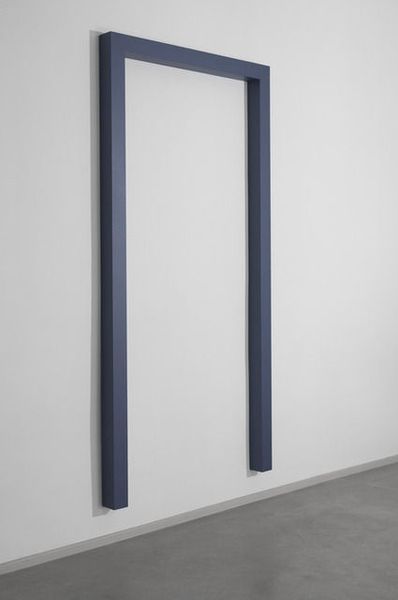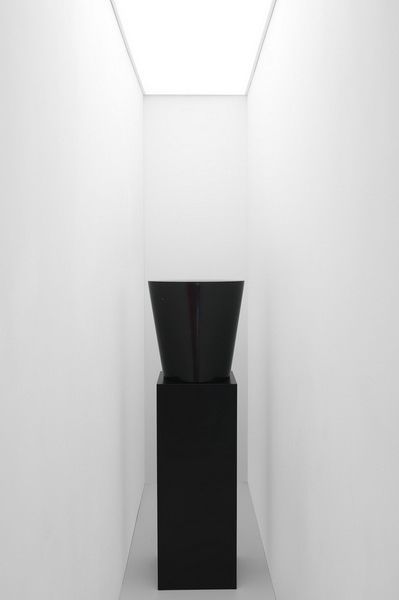
Copyright: Richard Artschwager,Fair Use
Curator: Standing before us is Richard Artschwager's "Pianofart" from 2008, a thought-provoking assemblage primarily crafted from wood. Editor: My initial reaction? Strikingly austere. It's a monolith, yet the keys hint at potential expression stifled by this rigid structure. Curator: Indeed. Artschwager's work often dances between minimalism and conceptual art. Here, the piano keys become symbols – what kind of cultural or psychological memories does the piano hold? The assemblage is intriguing as both sculpture and potential furniture. What does that collision imply? Editor: It reads to me as a commentary on accessibility to artistic expression. The piano, traditionally a symbol of refined culture and status, is reduced to a mere facade, literally embedded in the material, posing a stark question about who gets to play. Curator: Consider how Artschwager manipulates our expectations. The piano, normally an instrument of fluidity and emotion, is here rendered static, almost unplayable. Perhaps he's reflecting on the ways cultural objects can become detached from their original purpose, transforming into hollow signifiers. Editor: Absolutely. This subversion could further speak to broader issues of appropriation and cultural commodification. The beautiful veneer hides what could be interpreted as the silence imposed on certain voices. There is potential for a narrative about class, privilege and performance here. Curator: Artschwager’s intentional ambiguity also extends to the materials themselves, the wood grain adding depth while simultaneously highlighting the object’s artificiality. It makes one question the very definition of 'art' versus 'object'. Editor: Ultimately, "Pianofart" is successful at prompting reflection on power dynamics within artistic and cultural spheres. It asks: Who holds the power to define and create art, and whose voices are being silenced or, quite literally, blocked from expression? Curator: It certainly holds deeper cultural meaning even while possessing the surface elements of design and geometry. This invites each viewer to unlock their own narrative from the form. Editor: Well, I leave this piece seeing both beauty and constraint, the solid wood hinting that culture isn’t a set of inert concepts, but things with tangible material properties impacting our lives in definite ways.
Comments
No comments
Be the first to comment and join the conversation on the ultimate creative platform.

